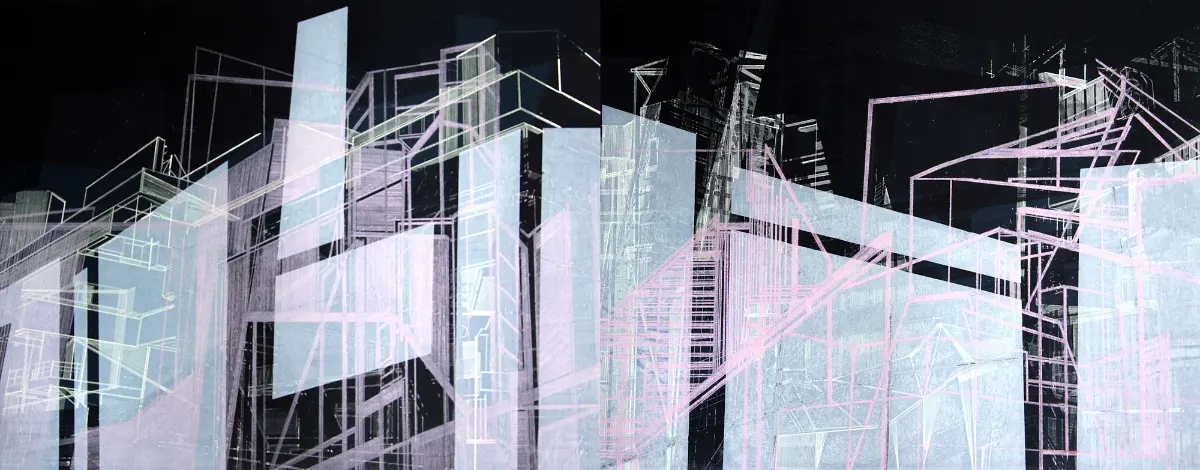Affordable Art Fair 2018
For artist architects, pictorial memory comes into play when the eye traces familiar spaces. The artist architect spontaneously synthesises shapes, lines, outlines and forms. Images emerge and become somewhat flattened, combining with the recollection of forms. The building is not depicted as a solid form in our works. It becomes a faade, and a fragment, as a snapshot of memory.
This separation of shapes that outline an architectural form is one foundation for the way artists and architects imagine new methods of creating form in two dimensions. Architecture is about designing buildings that inhabit a site as a constructed form. I are interested in the designs that are made for buildings as well the actual buildings that I choose to re-invent in my work. The process of collecting and assembling images marks an important stage in the production of the final image. The starting point is the centre of a city and the collaboration with the architects space.
This body of work relies on the way I see images of buildings whilst travelling on a train. Japan was the chosen city and the bullet train my method of seeing. Images became blurred and the facade, a snapshot of what I had seen. Time and space interact with evidence skewed; a place that I recorded whilst on the move.







